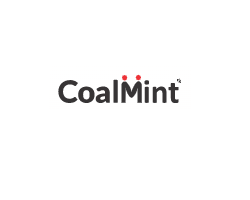What Factors Are Pushing Australian Coking Coal Prices Lower?

June 14, 2022 - Global coking coal prices are receding fast from the record-high levels witnessed in late-March 2022. While the gradual restoration of stability in global trade compared to the immediate aftermath of Russia's invasion of Ukraine in end-February has tempered prices somewhat, the recovery in supplies from the leading exporter Australia has also had a sobering influence on prices.
Buyers are looking for price stability as steep prices since October 2021 have dented the margins of steel producers, especially in Asia, CoalMint understands.
Prices have fallen sharply in the last 15-20 days. Australian premium hard coking coal prices were assessed at $368/t FOB on 13 June - down sharply by around 30% from $525/t a month back. Prices have climbed down from peak levels of $670/t in late-March. Prices have fallen to $397/t CNF India for Australian premium coking coal from $554/t a month back.
Similarly, US low-volatile met coal prices have dropped to $365/t FOB USA at present from $471/t FOB a month back.
Surge in supplies

Australia, which accounted for 53% of total global trade in metallurgical coal in 2021, saw exports jump around 11% month-over-month in May to 13.6 million tonnes (mnt) from 12.3 mnt in April. Notably, exports were recorded at over 13.5 mnt in March as buyers scrambled to secure supplies from other origins following the Russia-Ukraine war. This contributed to pushing prices higher. With around 32 mnt of exports in 2021, Russia's share in global met coal trade was roughly 10% in 2021.
The long-term supply scenario remains supported as super-strong met coal prices over the last three quarters has triggered coal exploration investments in Australia, with the government's Department of Industry, Science, Energy & Resources estimating coking coal exports to touch nearly 180 mnt in 2022.
However, sanctions on Russian coal have not really generated extra demand for Australian or Atlantic cargoes as steel production has remained sluggish. This is true despite the fact that Russian coking coal is by far cheaper than that of other origins. China has increased cheaper Russian coal sourcing and Indian bulk buyers have also revealed interest in increasing imports in the coming days. However, the market chatter notwithstanding, no clear mechanism for Rupee-Rouble trade has emerged.
Steel outlook
In China, the recovery in demand is still awaited after the gradual lifting of COVID-19 lockdowns and steel margins still remain subdued.
The Indian government's decision to impose 15% export duty on steel has hurt sentiments against the backdrop of steep coking coal prices even as the import duty on met coal and coke was waived by the government.
Similarly, in the EU high energy prices have impacted steel production capacity while semi-conductor supply problems are seen to be constraining production in Japan and South Korea.
Met coke prices correct

As global coking coal prices correct on an almost daily basis, met coke prices in the Indian market have also dropped over the past one month or so. Prices have dropped from INR 54,000-55,000/t for blast furnace grade coke to INR 47,000/t at present.
Also, China-origin coke export prices have fallen to $620/t CNF India from around $690/t a month back. However, with the gradual rise in Chinese domestic coking coal and coke prices as well as the firming up of the CFR China coking coal index, China's coke export prices have inched up to over $600/t CNF India from around $585/t a week or so back.
Therefore, Indian buyers who were lapping up competitively-priced Chinese met coke amidst high seaborne coking coal prices are likely to be reluctant to increase sourcing going forward. India's coke imports fell from 380,000 t in April to just about 150,000 t in May.
In China, steel producers in the steelmaking hub of Hebei have recently agreed to a modest uptick in domestic coke prices by $15/t as domestic coking coal prices edged higher and in view of higher steel production and demand with the pandemic situation normalising.
Environmental restrictions and safety inspections in China have traditionally inhibited coking coal production, especially in the Shanxi province. Chinese domestic quasi-grade met coke prices have dropped around RMB 300/t (around $45/t) m-o-m. However, prices are expected to edge higher on recovery in steel production outlook.
Outlook
With recovery in supplies from the key exporters, coking coal prices are expected to trend lower in the coming months. Australian suppliers have adapted to the changed export dynamics after China's informal ban on exports in late 2020 and supplies to India, Japan, South Korea and the EU have largely made up for Chinese imports.
Australia's Department of Industry, Science, Energy & Resources has forecast coking prices to average $300/t in 2022, with prices falling from current elevated levels in H2 2022. But supply is expected to remain tight, with strong steel prices encouraging global production to rise, even as China constrains its steel output.
However, gradual gains in Australian supply, and the withdrawal of remaining global stimulus measures, should help markets to balance, with prices forecast to fall in 2022. Informal import restrictions imposed by China on Australia coal could prevent downward movement in prices and add to freight costs, forcing global supply chains to continue to adapt.
For China, however, easing supplies from Mongolia and cheaper Russian imports are likely to exert pressure on coking coal prices.
In view of the lack of pricing power of Indian buyers, the Indian Steel Association (ISA) has requested the government to intervene in restraining coking coal prices. It is expected that decline in prices from here on may help Indian steelmakers shore up their margins in H2. India's projected demand is likely to remain unaffected though, as India's steel demand is expected to grow over 7% in contrast to a just 0.4% rise in global steel production, as per World Steel Association outlook.

